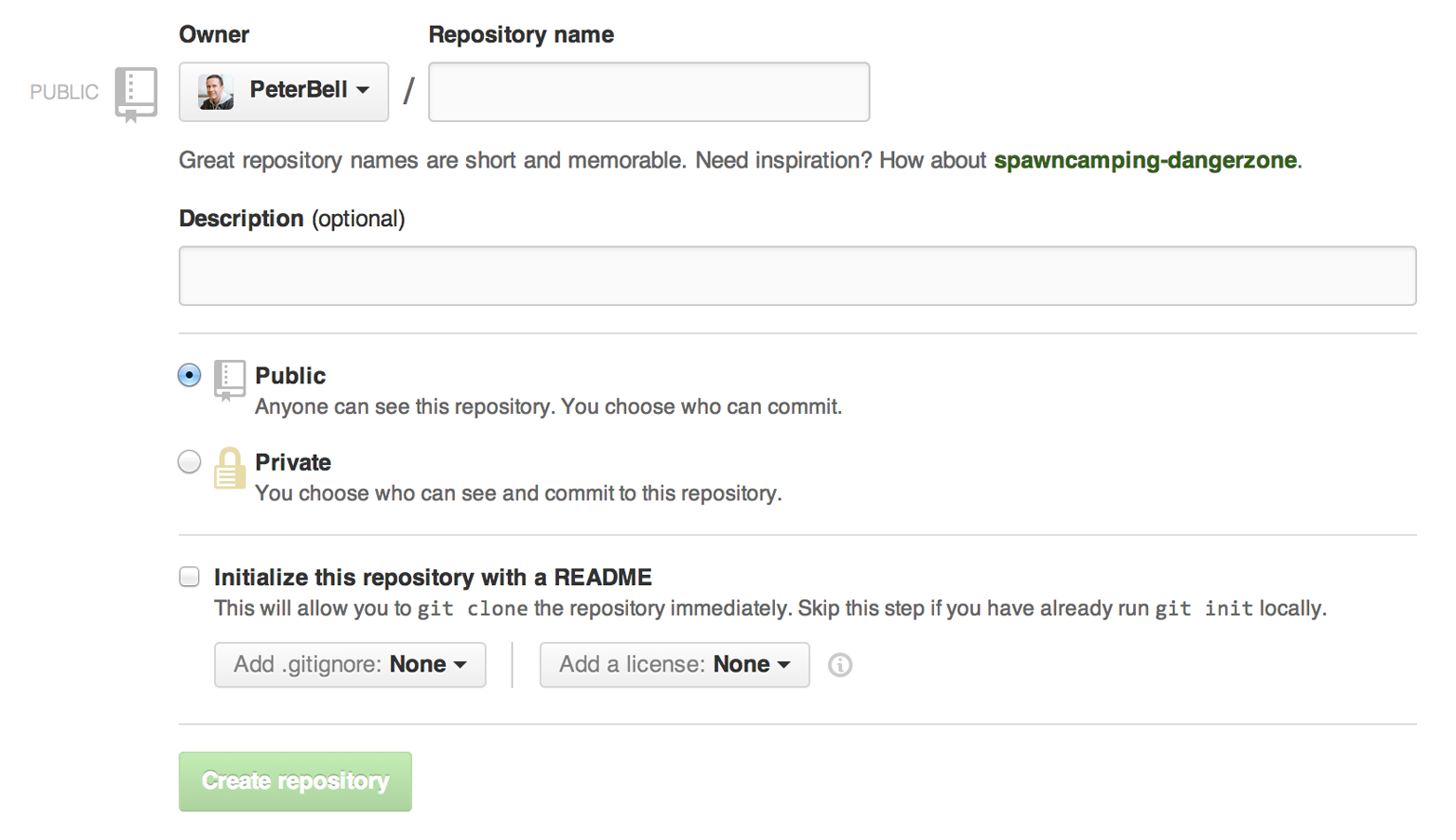Chapter 5. Creating and Configuring
So far we’ve looked at how to view, edit, and collaborate on projects. In this chapter we’re going to go through the process of creating and configuring a GitHub repository for a new project.
If you’re working with developers on a contract basis, you’ll want to create the repository they use to work on. By creating the repo, it means that you’ll always have access to the code and the additional information contained in pull requests, issues, and wikis. Once you’ve created the repo, you can then add the developers as collaborators so they’ll have access to the project—until you decide to revoke it. You do not want contract developers to create the repo for you. If they do, they’ll be able to remove you from the project at any time.
Creating a Repository
To create a new project on GitHub, click the + sign to the right of your username at the top right of the page. Then click the “New repository” option in the drop-down list. You’ll see the new repository form, as shown in Figure 5-1.

Figure 5-1. The new repository form
The first thing to do is decide whether to create the repository under your username or under an organization. You can see in Figure 5-2 a list of the possible organizations to which I could add a new repository. If you don’t have access to any organizations, you’ll just leave this defaulted to your username. Remember, you’ll always ...
Get Introducing GitHub now with the O’Reilly learning platform.
O’Reilly members experience books, live events, courses curated by job role, and more from O’Reilly and nearly 200 top publishers.

